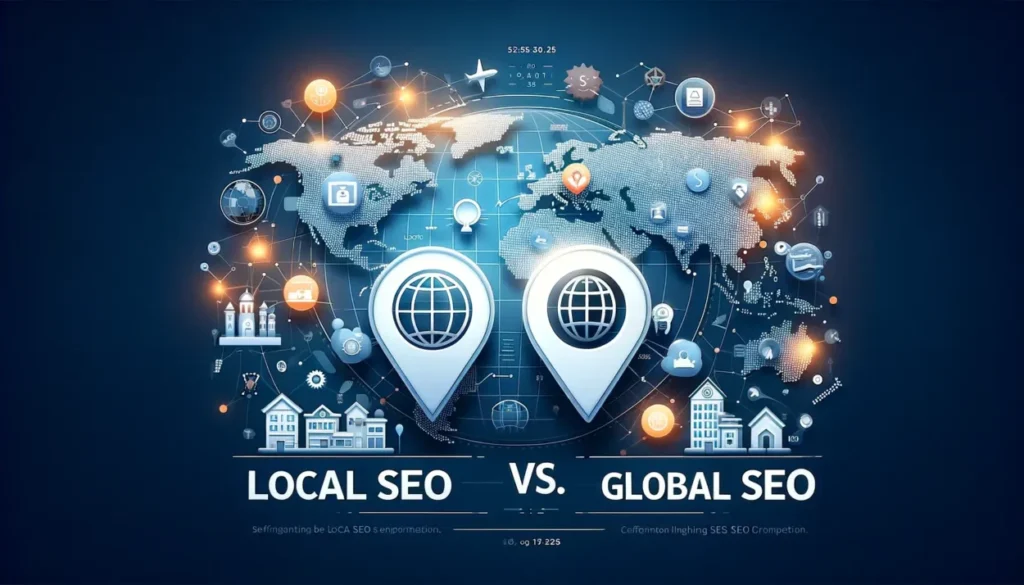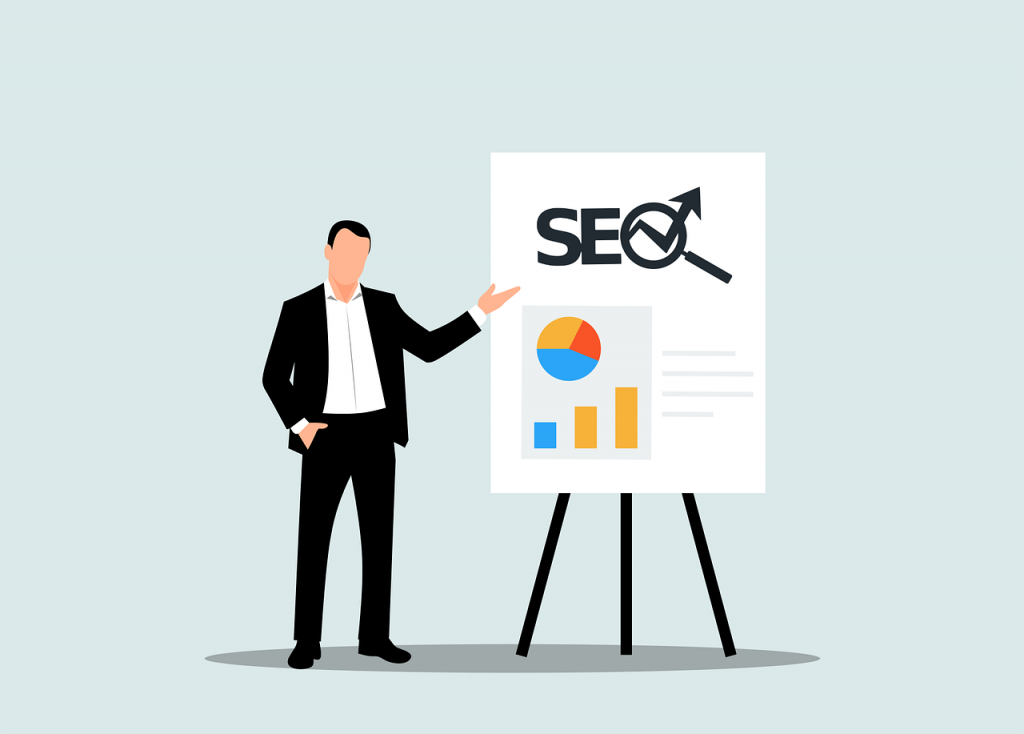In the bustling digital marketplace, a kaleidoscope of ecommerce sites clamors for attention—each unique in its offerings yet unified in the quest for consumer engagement. Content marketing emerges as the maestro, orchestrating a symphony of words, images, and interactive media that beckons shoppers into a world beyond the mere transaction. With the finesse of a skilled painter, this strategy dabs color onto the canvas of the internet, transforming blank product pages into rich narratives that resonate with the desires and needs of the audience. It’s a world where stories sell, and products become heroes on a quest to solve problems, enhance lifestyles, and fulfill dreams.
As the dawn breaks over the horizon of online commerce, content marketing stands as a beacon, guiding potential buyers through the labyrinth of endless digital aisles. Blogs bristle with insightful tips, how-to guides unfurl with the promise of expertise, and social media thrums with the heartbeat of vibrant communities rallying around beloved brands.
The Essential Role of Content Marketing in Ecommerce
In the bustling marketplace of the digital age, understanding the significance of content marketing becomes a beacon for success. Like a masterful tapestry, good content marketing weaves together narratives that resonate with consumers, etching brand stories into memory. As good content marketing boosts ecommerce, it acts as the lifeblood of online sales, inviting shoppers into a world where unique content meets their deepest needs and desires. To harness its full potential, steps to implement effective content marketing for ecommerce unfold like a blueprint to treasure. Smartly allocating content marketing cost and optimizing marketing resources, even enterprise brands find that good content marketing plans are not a luxury, but a necessity.
Understanding the significance of content marketing
Sailing smoothly from the bustling marketplace of ecommerce strategies, one finds an anchorage in the serene harbor of content marketing. Here, beneath the vast canopy of digital outreach, the significance of content marketing unfolds like a map to hidden treasure. It’s not merely a tactic—it’s an invitation to an adventure where stories and information become the compass guiding customers through the labyrinth of online shopping aisles.
Envision a world where content marketing plans are the lifeblood of ecommerce, pulsating through the veins of the internet to deliver a rich supply of engagement and trust. It’s in these intricately woven narratives and informative articles where the bond between brand and consumer strengthens, transforming casual browsers into loyal customers. Good content marketing doesn’t shout from the rooftops; instead, it whispers in the ears of those who seek value, relevance, and connection.
Effective ways to kindle the fires of interest are seeded in unique content that blooms in the minds of readers, encouraging them to return to the garden of your online presence.
How content marketing boosts ecommerce
Imagine a bustling digital marketplace where every click is a potential sale, and every sale is a victory in the grand bazaar of ecommerce. Amidst this vibrant scene, content marketing emerges as the master storyteller, weaving narratives that capture the imagination and wallets of online shoppers.
Content marketing boosts ecommerce by acting as the magnetic pull that attracts customers to a brand’s digital doorstep. It is the trail of breadcrumbs that leads curious explorers through a forest of products until they find their perfect fit. By consistently delivering valuable and relevant information, content marketing plans become the guiding stars for consumers navigating the vast online sky, leading them to make informed purchasing decisions.
Moreover, this strategy helps to establish a voice for the brand, a personality that shoppers can relate to and trust. As relationships form and strengthen, content marketing build a loyal community around a product or service. This community, in turn, serves as the fertile ground for seeds of advocacy and word-of-mouth promotion, propelling the ecommerce engine forward with vigor and vivacity.
Steps to implement effective content marketing for ecommerce
As we turn the page to a new chapter in our ecommerce success story, let’s paint the landscape of a robust strategy—one where content marketing becomes the artisan, meticulously crafting the shopping experience. To implement a content marketing strategy that transforms browsers into buyers and onlookers into brand advocates, start by identifying the target audience. Know their desires, pain points, and digital footprints.
Next, curate a tapestry of tailored content. This ranges from eye-catching visuals and compelling product descriptions to insightful blog posts that address consumer questions and concerns. Each thread in this tapestry should be woven with SEO best practices to ensure visibility in the bustling marketplace of search engine results.
Engagement is the cornerstone, so create interactive elements such as quizzes, polls, and contests to stir the spirit of participation. Encourage user-generated content to foster a community around the brand, allowing customers to become storytellers of their own experiences.
Consistently analyze and refine the strategy.
How to Plan and Strategize Your Content Marketing
Embarking on the journey of content marketing without a map is like setting sail without a compass. A content marketing plan, meticulously stitched to the fabric of your brand’s identity, becomes your North Star. Tailored content marketing strategies are essential, guiding each step with precision to resonate with your distinct audience. As you weave the tapestry of your plan, consider the different content marketing activities, each thread unique in texture and purpose, ensuring your brand stands out in a bustling marketplace.
Armando Roggio content marketing wisdom suggests that the heart of any content marketing plan beats with engaging content.
The importance of a tailored content marketing plan
As a bridge from understanding the pivotal role of content marketing, envision a garden where each plant demands specific care—so too does your ecommerce endeavor flourish with a content marketing plan thoughtfully cultivated to its unique needs. Crafting this blueprint is less about wielding a one-size-fits-all approach and more about sewing a quilt of tactics, each square tailored to the hues and textures of the brand’s voice and audience’s desires.
The importance of a tailored content marketing plan cannot be overstated. It’s akin to charting a map through the bustling marketplace of the internet, where every turn represents a potential connection with a customer. With meticulous planning, content unfurls like a tapestry, intricately woven with trends, analytics, and consumer behavior to resonate deeply and stand out amidst a sea of competitors. By meticulously aligning content with the brand’s goals and consumer needs, the path to conversion becomes as inviting as a sunlit trail, leading customers through a journey of discovery and delight.
Differentiating your content marketing activities
Bridging the gap between awareness and conversion, the art of content marketing requires a distinctive approach that sets your brand apart in a crowded digital marketplace. Differentiation in content marketing is akin to a craftsman selecting the perfect tools to sculpt a masterpiece; it necessitates a deliberate choice of mediums and messages that resonate with the heartbeat of the target audience. Imagine a tapestry woven with threads of creativity, wit, and insight—this is the fabric of content marketing that distinguishes one brand from another.
Crafting blog posts that tell a story, rather than just push a product, creates a narrative that potential customers want to follow. Interactive content, like quizzes and polls, injects a touch of playfulness and personalization, inviting an audience to engage rather than just observe. Meanwhile, video content that captures the essence of a brand with rich visuals and compelling storytelling can transform passive viewers into active participants in the brand’s journey.
Engaging content: the backbone of your content marketing strategy
As the digital marketplace buzzes with a plethora of offerings, it’s the allure of captivating content that truly ensnares the imagination of the shopper. Imagine a world where each piece of content serves as a beacon, guiding customers through a journey of discovery, connection, and delight. This is not just any content, but the kind that resonates, that whispers directly into the heart of the audience’s desires and interests.
At the core of a successful online presence lies content that doesn’t just speak, but sings. It’s the stories that are shared with a spark of creativity, the articles that weave a tapestry of relevance, and the videos that dance with vibrancy on the screens of potential buyers. This content becomes the spine of your digital strategy, holding everything upright and ensuring that when your audience dives into the sea of information, it’s your voice they follow, your narrative they trust, and your brand they remember with a smile.
Influencer and Business Marketing Services in Ecommerce
In a bustling digital marketplace, business influencer marketing services unfurl like a vibrant tapestry, connecting vibrant personalities with eager online shoppers. Marketing managers, the orchestrators of this virtual symphony, deftly maneuver through the ecommerce landscape, ensuring products harmonize with the right voices. These maestros of the digital realm understand that the fusion of originality and authenticity in messaging weaves a compelling narrative that captivates audiences. For an online business to flourish, the blend of this artistry with strategic influencer partnerships creates a tapestry of success, resonating with consumers and turning casual browsers into loyal customers.
Leveraging business influencer marketing services
As we weave through the fabric of content strategy, let’s embellish the tapestry with the vibrant threads of influencer collaboration in the ecommerce realm. Imagine a bustling digital bazaar, where voices with magnetic pull beckon eager audiences to discover treasures within the myriad of virtual storefronts. Here, the art of leveraging influencer collaborations shines as a beacon, guiding potential customers through the labyrinth of options and illuminating products with the warm glow of trusted recommendations.
In this landscape, brands ally with personalities who resonate with their values and audience, crafting campaigns that shimmer with authenticity. These partnerships become the loom on which compelling narratives are woven, stories that intertwine the essence of the brand with the influencer’s signature style. The result? A tapestry that captivates the onlooker, inviting them to become a part of the story, to experience the brand through the eyes of someone they admire.

Role of marketing managers in ecommerce
As our journey through the digital marketing landscape continues, we now turn our attention to the orchestrators of ecommerce success – those at the helm of crafting the virtual shopping experience. In the bustling online marketplaces where competition is fierce, the role of ecommerce stewards is both critical and multifaceted.
These digital maestros meticulously coordinate the symphony of strategies required to captivate consumers. They are the architects of customer journeys, designing seamless pathways from the first click to the final checkout. With a keen eye for detail and an analytical mind, they monitor the ebb and flow of web traffic, adjusting campaigns like sails to catch the winds of consumer interest.
Through their strategic oversight, product displays transform into virtual showcases that dazzle the eye, while promotional campaigns resonate with the heartbeat of trends. It is their expertise that ensures the storefront remains a beacon of innovation, where each visitor’s experience is both memorable and enticing, encouraging not only a single purchase but fostering a loyal customer base eager to return.
Unique content and its role in influencer marketing
As the content marketing journey continues to unfold, imagine the gentle brush of creativity painting a canvas where influencers become the storytellers of a brand’s narrative. In the bustling marketplace of ecommerce, fresh and imaginative content is the heartbeat of influencer marketing. It’s the thought-provoking blog post that captures a reader’s curiosity or the eye-catching image that stops a scroll in its tracks.
In the realm of influencer collaboration, originality blossoms into campaigns that resonate with authenticity. A dash of humor, a sprinkle of wit, and a generous helping of relatability—these are the ingredients that concoct a memorable feast for the audience’s senses. When an influencer’s personal flair intertwines with a brand’s message, the result is a symphony of engagement that echoes across digital platforms.
Envision a world where each piece of content tells a part of the story, a story so captivating it turns passersby into participants and observers into advocates.
Digital Marketing: The Magic Wand for Ecommerce Success
Venturing into the enchanting world of digital marketing services unveils a kaleidoscope of strategies pivotal for ecommerce triumph. Each click and scroll through social media marketing becomes a brushstroke on a canvas, painting consumer interest and loyalty across the digital marketplace. This impact of social media marketing on ecommerce is profound, turning browsers into buyers with the allure of social proof examples that resonate with the zeitgeist.
Meanwhile, inbound marketing emerges as an art form in itself, a powerful tool that magnetically attracts customers through a symphony of 1ccontent marketing, SEO, and personalized experiences.
Exploring the realm of digital marketing services
As one sails smoothly from the bustling harbor of influencer and business marketing services, the voyage enters the expansive sea of digital marketing, a veritable ocean of possibilities that beckons ecommerce vessels of all sizes. Drifting through this realm, digital marketing services unfurl their sails, catching the winds of innovation and technology to propel ecommerce enterprises toward horizons of success.
Within this domain, a spectrum of digital marketing strategies awaits, each a star guiding merchants through the night sky of the online marketplace. Search engine optimization illuminates the path, ensuring that a brand’s digital footprint casts a bright light amidst the crowded web. Pay-per-click campaigns, like shooting stars, offer fleeting yet potent visibility, drawing eyes and igniting curiosity with their precise targeting.
Email campaigns weave a tapestry of personalized messages that resonate with the warmth of an old friend’s letter, fostering loyalty and repeat voyages to digital storefronts. Meanwhile, social proof examples shine like lighthouses, guiding potential customers with the reassuring glow of testimonials and reviews.
The impact of social media marketing on ecommerce
As the conversation shifts from influencers to the broader landscape of digital marketing, it’s impossible to overlook the ripple effect that digital marketing services, especially through social channels, have on ecommerce. Imagine a world where every like, share, and comment amplifies a product’s reach, creating waves of visibility in the vast ocean of the internet. This realm is not imaginary but the reality of digital marketing’s impact on ecommerce.
The buzz of notifications signals continuous engagement, with each interaction acting as a beacon, guiding potential customers to ecommerce storefronts. Here, inbound marketing strategies interlace with digital marketing tactics, crafting a web of connections between brands and consumers. Posts with stunning visuals and compelling narratives capture attention, while strategic hashtags increase the likelihood of discovery by those scrolling with intent.
In this dance of digital persuasion, inbound marketing becomes a partner, not just a spectator. It entices users with valuable content, turning casual browsers into loyal patrons.
Inbound marketing: A powerful tool for online businesses
Picture this: as the digital landscape continues to evolve, the allure of digital marketing becomes undeniable, acting like a beacon guiding ships through the night. Now, let us delve into a particular aspect that is reshaping the Ecommerce horizon – a strategy that beckons customers in rather than reaching out to them. Imagine a magnet, silently yet powerfully attracting metal shavings; this is the essence of Inbound marketing, a potent tool for Ecommerce entities.
In this enchanting realm, the focus shifts from intrusion to attraction. The strategy blossoms by creating a tapestry of educational blogs, insightful webinars, and comprehensive guides – all crafted with the consumer in mind. The result? A flourishing garden where potential buyers naturally gravitate towards the products or services that solve their problems or fulfill their desires. Behind this magic lies a well-crafted mechanism that nurtures leads through a journey – from curious onlookers to loyal ambassadors.
Driving Conversions through Effective Content Marketing
Imagine a garden abloom, where every petal and leaf leads a visitor toward the heart of the oasis. This is the essence of how content marketing blossoms into increased conversions, each piece crafted to guide potential customers through a journey of discovery and decision. As the sun nurtures the garden, so does organic traffic vitalize ecommerce sales, delivering a stream of interested visitors through the natural allure of search engines and engaging topics. Within this ecosystem, the symbiotic relationship between content marketing and greater ROI unfurls; insightful articles, compelling videos, and informative graphics intertwine to form a lush landscape that entices and converts, weaving a tapestry of profitability.
How content marketing leads to increased conversions
As we meander through the maze of Ecommerce success, we stumble upon a path less trodden but blooming with potential: the enchanting garden of content marketing. Imagine a world where words are seeds, meticulously planted and nurtured to bloom into a tapestry of persuasive narratives, educational articles, and captivating visuals. These blossoms of knowledge beckon customers into a realm where informed decisions are the norm, guiding them gently towards the checkout with the promise of value and enlightenment.
Content marketing, with its rich soil of creativity, allows for a garden of relevance and authority to flourish. Meticulous care in crafting messages that resonate with the audience creates a magnetic pull, drawing in organic traffic like bees to nectar. This influx of visitors, already interested and engaged by the stories told, are more likely to pollinate the Ecommerce landscape with conversions, transforming casual browsers into loyal customers.
The role of organic traffic in boosting ecommerce sales
As we turn the page from the enchanting realm of digital marketing, let’s stroll down the verdant path of organic visitors, where virtual footprints lead to a flourishing e-commerce garden. Picture this: a bustling digital marketplace where each click is a potential seed of interest, sprouting into engagement and blossoming into sales. The influx of organic visitors, those who arrive through the power of search engines rather than paid advertising, acts as a life-giving river to e-commerce ecosystems.
This stream of visitors is not just any crowd—it’s composed of individuals actively seeking what the e-commerce platform has to offer. They are like bees to flowers, drawn by the allure of relevant, keyword-rich content that promises to answer their queries or fulfill their needs. As they navigate through informative blog posts, compelling product descriptions, and immersive videos, their journey often culminates in the sweet nectar of purchase.
The fruits of this natural growth cannot be overstated.
Understanding the correlation between content marketing and greater ROI
Picturing the digital marketplace as a thriving garden, content marketing stands as the sunlight, vital for growth and blossoming sales. Now, let’s delve into the heart of the garden, where the symbiotic relationship between content marketing and a flourishing return on investment reveals itself. For ecommerce ventures, the art of crafting compelling narratives and informative pieces acts as the nurturing soil from which customer loyalty and trust sprout. This trust, in turn, ripens into repeat purchases and brand advocacy, both of which sweeten the fruits of revenue.
The alchemy of well-strategized content marketing lies in its ability to enchant potential customers without the overt calls of traditional advertising. This subtle enchantment weaves a value-laden tapestry that customers cling to, often leading to a higher lifetime value per customer. As the tapestry unfurls, the investment in quality content sees a multiplier effect – costs once sown are returned manifold, as the brand’s reputation flourishes, inviting a stream of enduring patronage that far outweighs the initial outlay.
The Power of Non-Interruption Marketing in Ecommerce
Imagine a bustling digital marketplace, where noninterruption marketing gently guides consumers through a serene journey of discovery, devoid of the jarring stops of conventional advertising. As this emerging trend weaves through the tapestry of ecommerce, it’s paramount to sidestep the common content marketing mistakes that often ensnare unwary brands. Mistakes such as neglecting audience research or bypassing SEO optimization can eclipse the brilliance of the most carefully crafted campaigns.
Non-interruption marketing: An emerging trend in ecommerce
As the digital storefronts bustle with activity, imagine a world where advertisements blend seamlessly into the shopper’s journey, enhancing rather than interrupting the experience. Welcome to the realm of non-interruption marketing, a burgeoning trend in ecommerce that whispers rather than shouts, inviting engagement through subtlety and value.
This approach to marketing weaves promotional messages into the fabric of the consumers’ online interactions, ensuring that they feel less like a target and more like a valued participant in the conversation. Picture a shopper scrolling through an online store, encountering expert advice, how-to guides, and interactive videos that not only enrich their knowledge but also gently guide them towards a purchase, all without the jarring disruption of traditional ads.
By sidestepping common content marketing mistakes, brands are adopting this next-level approach, crafting an online environment reminiscent of a helpful friend who recommends products unobtrusively. This strategy is not just a fleeting trend but a transformative shift in how ecommerce platforms engage with potential buyers, creating a serene shopping oasis in the bustling digital marketplace.
Avoiding common content marketing mistakes
As the conversation shifts from the engine of conversion to the art of subtlety in ecommerce, a keen focus on sidestepping the pitfalls of content marketing becomes imperative. A landscape, once lush with the promise of direct engagement, now blooms with the delicate touch of non-invasive strategies, where the gentle sway of storytelling leads customers through a garden of discovery.
In navigating this terrain, first and foremost, is the avoidance of overwhelming audiences with a deluge of sales pitches; instead, a sprinkle of narrative magic captures the imagination. Content that screams of desperation, clawing for attention with glaring calls-to-action, often finds itself lost in the cacophony of the marketplace. A whisper of authenticity, therefore, carries farther than a shout.
Moreover, a myopic focus on search engine algorithms, neglecting the human element—the very souls seeking enlightenment and solutions—can lead content to wither on the vine.
Adopting a next-level approach to content marketing
As we navigate the bustling marketplace of Ecommerce, a whisper amidst the cacophony becomes a roar – the rise of non-interruption marketing is undeniable. It’s time to turn the page and delve into adopting a next-level approach to content marketing that eschews the beaten path for a journey through uncharted territories.
Imagine a tapestry of content that weaves itself seamlessly into the daily lives of consumers, a narrative so enthralling that it beckons them to explore further without the brash clang of traditional advertising. This next-level approach deploys storytelling that resonates with the heartbeats of the audience, creating experiences rather than mere advertisements. It dances around the periphery of their attention, only to draw them in with the magnetic pull of a well-spun yarn.
It marries data with creativity, employing algorithms that predict desires not yet whispered by the consumer, and crafting stories that fulfill them. This strategy does not shout from the rooftops but instead, builds a secret garden where every turn is an invitation to discover.

Building Meaningful Relationships through Content Marketing
Quality composition serves as the cornerstone for fostering deep connections with clientele, akin to the nurturing warmth of a cozy café where every patron feels cherished. As the artisan, Han Dickson, weaves tales through a tapestry of words, each thread strengthens the bond with the reader, transforming first-time visitors into loyal companions.
The monthly newsletter acts as the hearth, a constant beacon drawing customers back with the glow of updates and insights. It’s the monthly dose of familiarity and anticipation that keeps the flame of engagement alive.
Stepping into the era of enhanced email intelligence, ecommerce is revolutionized.
How good content helps build meaningful relationships with customers
As we navigate away from the bustling marketplace of non-interruption marketing, we discover a serene garden where the seeds of customer loyalty are sown with the tender care of quality content. Imagine a tapestry of words and images, meticulously woven to resonate with the hearts and minds of readers. This is the essence of how captivating narratives and insightful articles become the cornerstone of trust between ecommerce brands and their audience.
Within this garden, every piece of content acts as a bridge, narrowing the chasm between commerce and connection. Readers, enchanted by stories that echo their own experiences, begin to see a brand not just as a purveyor of goods but as a trusted friend. Han Dickson, a luminary in the realm of relationship marketing, often illustrated how a well-crafted blog post or an enlightening video can transform a one-time buyer into a lifelong advocate.
The role of newsletters in maintaining customer relationships
As the sun parts the clouds, offering a new dawn, so does the clever utilization of newsletters illuminate the path to nurturing customer bonds in the ecommerce landscape. Imagine a tapestry of words, woven into a newsletter, that arrives with the comforting regularity of an old friend. This isn’t just an update; it’s a bridge of ongoing conversation between a brand and its patrons.
Han Dickson, a seasoned marketer, often likens the newsletter to a garden that flourishes with attentiveness – each issue another opportunity to water the seeds of loyalty. Through these digital missives, ecommerce entities share not just product news but stories, advice, and insights that resonate with their audience’s daily lives. The carefully curated content in each newsletter acts as a gentle whisper in the ear of a consumer, reminding them that beyond transactions, there’s a valued relationship.
And like a garden, these relationships require nurturing. Regular, thoughtful newsletters ensure that customers feel heard and seen, fostering a connection that transcends the bustling marketplace.
Enhanced email intelligence: A game-changer in ecommerce
As the digital storefronts hum with activity, the silent force of enhanced email intelligence redefines connection strategies in ecommerce, turning the art of communication into a symphony of data-driven insights. Imagine a world where every email sent to customers acts like a thoughtful gesture, tailored to their interests and preferences, arriving at just the right moment. Enhanced email intelligence is that game-changer, transforming newsletters from mere broadcasts into engaging conversations.
This sophisticated tool delves into the depths of customer behavior, analyzing patterns and predicting the perfect timing for sending emails. It’s like having a crystal ball that reveals when customers are most likely to engage, ensuring that every message strikes a chord rather than getting lost in the abyss of the inbox. With this enhanced capability, emails evolve into a continuous dialogue with customers, fostering a bond that transcends transactional interactions and cements loyalty. In the bustling world of ecommerce, where attention is the currency of the realm, enhanced email intelligence is the ace up the sleeve, ensuring that every communication is an opportunity to enchant and retain customers.
The Impact of Content Marketing on Sales and ROI
In the bustling marketplace, content marketing unfurls as a beacon that guides consumers to the best plac to fulfill their needs. When meticulously crafted, this strategy not only entices but also educates, creating a seamless path from discovery to purchase. It whispers into the hearts of potential buyers, gently nurturing leads that the sales team can convert with ease. Delving into the digital realm, understanding mail marketing ROI becomes pivotal in ecommerce, where each click can be traced, painting a clear picture of investment versus gain.
How content marketing influences sales
As if by magic, the art of content marketing casts a spell on the sales graph, causing it to rise like a kite caught in a gentle breeze. This alchemy of words and images weaves together a tapestry that beckons consumers closer, whispering the tale of a brand and its treasures. It’s not just about catching the eye; it’s about holding the gaze, about inspiring a dance of curiosity and confidence that leads to the checkout page.
Picture this: a blog post so rich in detail, it feels like walking through an orchard, plucking the fruit of knowledge with every step. Or an infographic that unfolds like a treasure map, guiding prospects through a journey of discovery, each fact a sparkling gem that beckons further. This is how content marketing influences sales – not with a brash shout, but with an irresistible siren’s call that lures shoppers towards purchase.
With every piece of content, mail marketing ROI is gently nudged upwards, like a well-nurtured plant reaching for the sun.
Understanding Mail Marketing ROI in ecommerce
As dawn breaks on the digital marketplace, a new day offers fresh opportunities to harvest the fruits of strategic connections. Imagine a garden where every seed sown is an email, meticulously crafted to bloom into a lasting customer relationship. Here, understanding Mail Marketing ROI in e-commerce is akin to a gardener gauging the health and yield of their crops.
With each email campaign sent, data trickles in like nourishing rain, quenching the thirst for insights on customer engagement and purchasing behavior. In this lush landscape, the return on investment from email marketing becomes clear, as targeted messages reach inboxes like bees to flowers, pollinating prospects with relevant offers and information.
Tracking opens, clicks, and conversions, the savvy e-commerce merchant cultivates a rich understanding of what prompts subscribers to make the journey from casual reader to loyal customer. This knowledge, in turn, lowers cost by streamlining efforts directly toward the most fruitful endeavors, ensuring that every penny spent on email marketing helps to grow the bountiful garden of profitability.
How content marketing lowers cost and increases profitability
As a bridge from nurturing bonds with audiences, let’s illuminate how the art of content creation fuels profitability while thoughtfully conserving expenditures. The alchemy of crafting engaging narratives and informative pieces has a subtle yet potent influence on a business’s financial landscape. This treasure chest of words and images, when shared across various platforms, beckons a cascade of interest without the need for expensive advertising campaigns.
Imagine a garden where each seed of content blooms into a magnet for visitors, organically guiding them through a journey of discovery and connection with a brand. This natural pull reduces the reliance on traditional, cost-heavy promotional tactics, allowing for a leaner approach to budget allocation. By investing in a well-orchestrated array of articles, videos, and infographics, companies unlock a cycle of repeat traffic and prolonged engagement that traditional advertising struggles to match.
The fusion of strategic dissemination and audience captivation not only trims down direct expenses but also paves the way for a surge in profitability, transforming the conventional approach to boosting the bottom line.
How Content Marketing Contributes to Organic Transactions
Venturing into the world of content marketing unveils its pivotal role in nurturing organic customer interactions. Picture a garden where each piece of content is a seed, blossoming into flourishing relationships with every insightful word. In this landscape, the intertwining roots between content marketing and natural customer engagements run deep, fostering trust and authority. As one delves deeper, it becomes evident how these informative and engaging narratives drive purchase conversions, turning passive readers into active participants in the commerce dance. Moreover, related articles act as the pollinators in this digital ecosystem, cross-pollinating ideas and interests, thereby enhancing the likelihood of serendipitous discoveries and transactions.
The link between content marketing and organic transactions
As we wade through the digital marketplace, a river rich with possibilities, it becomes clear that content marketing is akin to a gentle current that guides potential customers to the shores of organic sales. The intertwining of content marketing and organic transactions is not just serendipitous but a result of meticulous cultivation of brand narratives that resonate with the audience.
Imagine a garden where each article is a seedling, promising to grow into a mighty tree whose branches are laden with the fruits of customer transactions. The soil, enriched with quality content, becomes the nurturing ground where trust takes root. With every informative blog post, every insightful case study, and every compelling infographic, the garden thrives, attracting visitors with the scent of authenticity and the promise of value.
In this verdant landscape, the path from information seeker to purchaser is paved with trust, credibility, and knowledge, all blossoming from the seeds of content.
Content marketing and purchase conversions: A deep dive
As the sun gently kisses the horizon at dawn, signaling the start of a new day, so does insightful content beckon potential customers towards the sunrise of a purchase decision. Content marketing, a beacon in the digital marketplace, illuminates the path to transactional enlightenment, guiding prospects through an educational journey that culminates in the sweet satisfaction of a well-informed purchase.
Delving deeply into the intricate dance between content marketing and the final act of purchasing, one uncovers a treasure trove of subtleties. Each piece of content acts as a stepping stone, laid with precision across the river of buyer skepticism. With every thoughtful article, infographic, or video, a bridge is built, encouraging trust to bloom like flowers in spring.
These crafted narratives, rich with knowledge and insight, are not merely passive observers in the buyer’s journey. Instead, they whisper into the hearts of potential buyers, nurturing a belief in the product’s value.
The importance of related articles in promoting organic transactions
Seamlessly bridging from the previous discussion on sales and ROI, one can’t overlook the subtle yet significant role that adjacent articles play in nurturing organic engagements and transactions. Imagine a tapestry, where each thread weaves into the next, creating a cohesive narrative. Related articles function similarly, guiding visitors through a journey of discovery that’s both seamless and inviting.
These articles, often nestled enticingly beside or beneath the primary content, serve as gentle nudges towards further exploration. They catch the eye with contextual relevance, whispering suggestions for the next read that promises to be just as enlightening as the last. Think of them as serendipitous guides, illuminating the path for readers to meander through a brand’s digital garden of information.
Each click on a related article represents an incremental step towards trust, a silent affirmation of the brand’s authority, and a greater likelihood of a transaction occurring naturally.
The Future of Ecommerce: A Blend of Content Marketing and SEO
In the bustling marketplace of ecommerce, SEO & its intricacies unfurl like a vibrant tapestry, becoming ever more crucial for visibility and success. Amidst this digital bazaar, popular services deftly weave SEO & content marketing into a seamless blend, bolstering their online presence. These strategies, executed with finesse, are the lifeblood for growing businesses, pulsating through cyberspace to connect with audiences. Imagine content marketing as a master key, unlocking the potential for businesses to thrive in the online arena, where each click and search leads to a discovery of new products and ideas, all guided by the astute use of SEO & content marketing.
The growing importance of SEO in ecommerce
As we venture further into the digital age, where e-commerce battles are fiercely fought in the search engine arenas, the significance of SEO in the realm of online retail cannot be overstated. Picture a lush garden of e-commerce websites, each vying for the sunshine of consumer attention; SEO serves as the water and nutrients that help these digital entities flourish in the crowded marketplace.
The alchemy that connects eager shoppers to the products they desire lies in the deft application of SEO principles. It has become the compass that guides potential customers through the labyrinth of internet offerings to the doorsteps of e-commerce platforms. The algorithms, like silent puppeteers, dance in response to the meticulous optimization of keywords, meta descriptions, and site architecture, ensuring that a business’s offerings whisper directly into the ear of the searcher.
As the digital marketplace expands, the mastery of SEO techniques becomes not just advantageous, but essential for survival and growth.
How popular services are leveraging SEO and content marketing
As the digital marketplace burgeons with opportunity, savvy service providers are weaving an intricate tapestry of SEO and content marketing to ensnare the attention of potential customers. In this dance of algorithms and articulation, companies are not just throwing out bait but are crafting entire ecosystems where content and search engine optimization coalesce into a seamless user experience.
Imagine a world where every click leads you through a curated garden of information, each article a petal unfurling with answers you sought – and some you didn’t know you needed. This is the reality that innovative service providers are creating. By planting keywords with the same care a gardener gives to seeds, they ensure that their content blossoms atop search engine results, capturing the gaze of curious onlookers.
These purveyors of digital realms don’t just stop at visibility. They cultivate rich, informative content that is more than mere words on a page; it’s a map guiding visitors through the vastness of the internet, straight to the solutions they offer.
Content marketing: The key to growing businesses online
As we weave through the tapestry of modern marketing strategies, it becomes clear that the threads of content marketing are not just interlaced, but are indeed the vibrant colors that draw customers into the rich fabric of online commerce. Imagine a bustling digital marketplace where content marketing stands as the bustling bazaar’s welcoming sign, enticing and guiding shoppers through a journey of discovery.
Content marketing, the art of storytelling that resonates with the heartbeats of the market, is a cornerstone in the grand bazaar of the web. It’s where narratives unfold, creating a vivid panorama of solutions for eager customers seeking to solve their problems or satisfy their desires. By offering a banquet of informative articles, gripping visuals, and immersive videos, businesses beckon visitors to feast upon a spread of knowledge before ever asking them to open their wallets.
This approach transforms browsers into believers and visitors into loyal patrons. It is the warm handshake, the friendly smile, and the knowledgeable guide that turns the vast, sometimes intimidating digital landscape into a familiar hometown market.
Conclusion
In the bustling marketplace of the internet, content marketing stands as a beacon, guiding shoppers through a sea of choices with stories that resonate and inform. The gentle hum of well-crafted articles, vibrant visuals, and immersive videos act as the currents that lead potential buyers to the shores of ecommerce sites, where transactions unfold with ease and certainty. This dance of information and persuasion is a harmonious blend of art and commerce, painting a future where the written word and smart optimization strategies join forces to keep the digital marketplace thriving.
Gazing into the horizon, one can see a landscape where content marketing and search engine optimization move in a synchronized waltz, their steps aligning to create a seamless path for consumers to discover and engage with brands. As this partnership strengthens, the ecommerce world blossoms, yielding fruitful sales and a quantifiable return on investment that secures the longevity of brands. This vision is not just a dream but a reality taking shape, one compelling narrative at a time.















